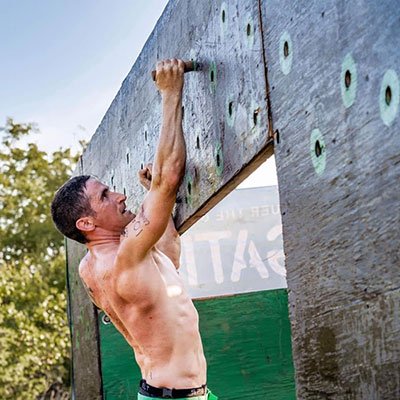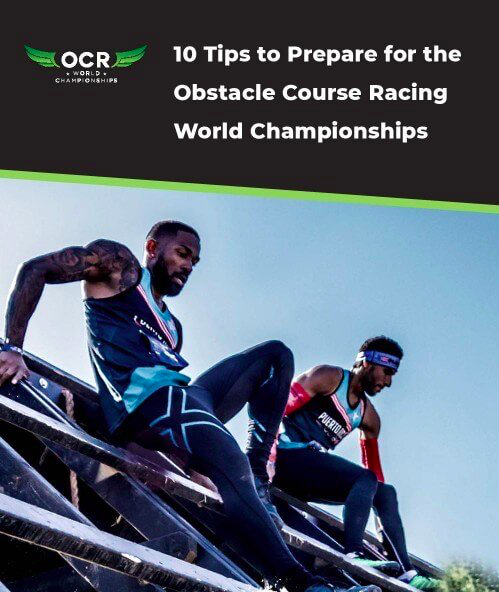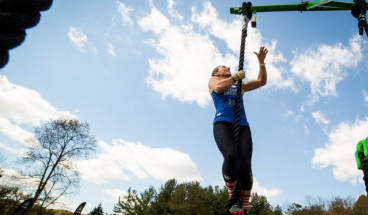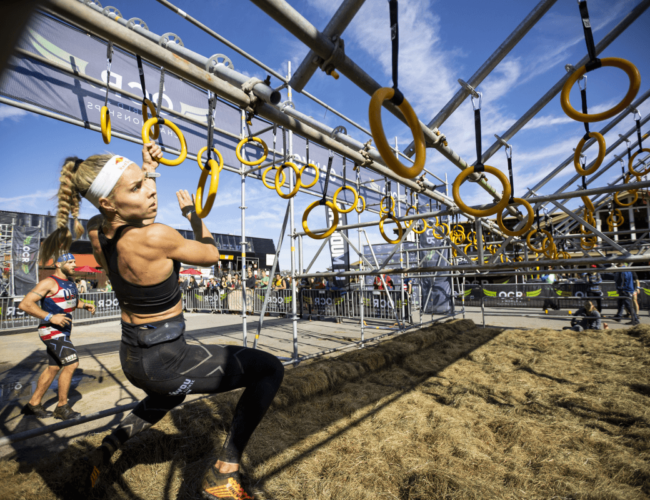
How to Train for the OCRWC: Grip Obstacles
Grip obstacles are the number one band taker at OCR World Championships (OCRWC). If your primary goal is to keep your band, you are going to want to place a lot of emphasis on your grip training. The topic is so large I’ve broken it into a couple of sections. In this one, I will go through what I call “standard” grip obstacles. Essentially it is any obstacle where you are grabbing a bar that is horizontal (whether perpendicular or parallel to you). Included in this are things like Trapeze, the Force 5 rig and Urban Sky. Although all three of these obstacles are different, they all involve grabbing a bar or bars overhead and traversing.
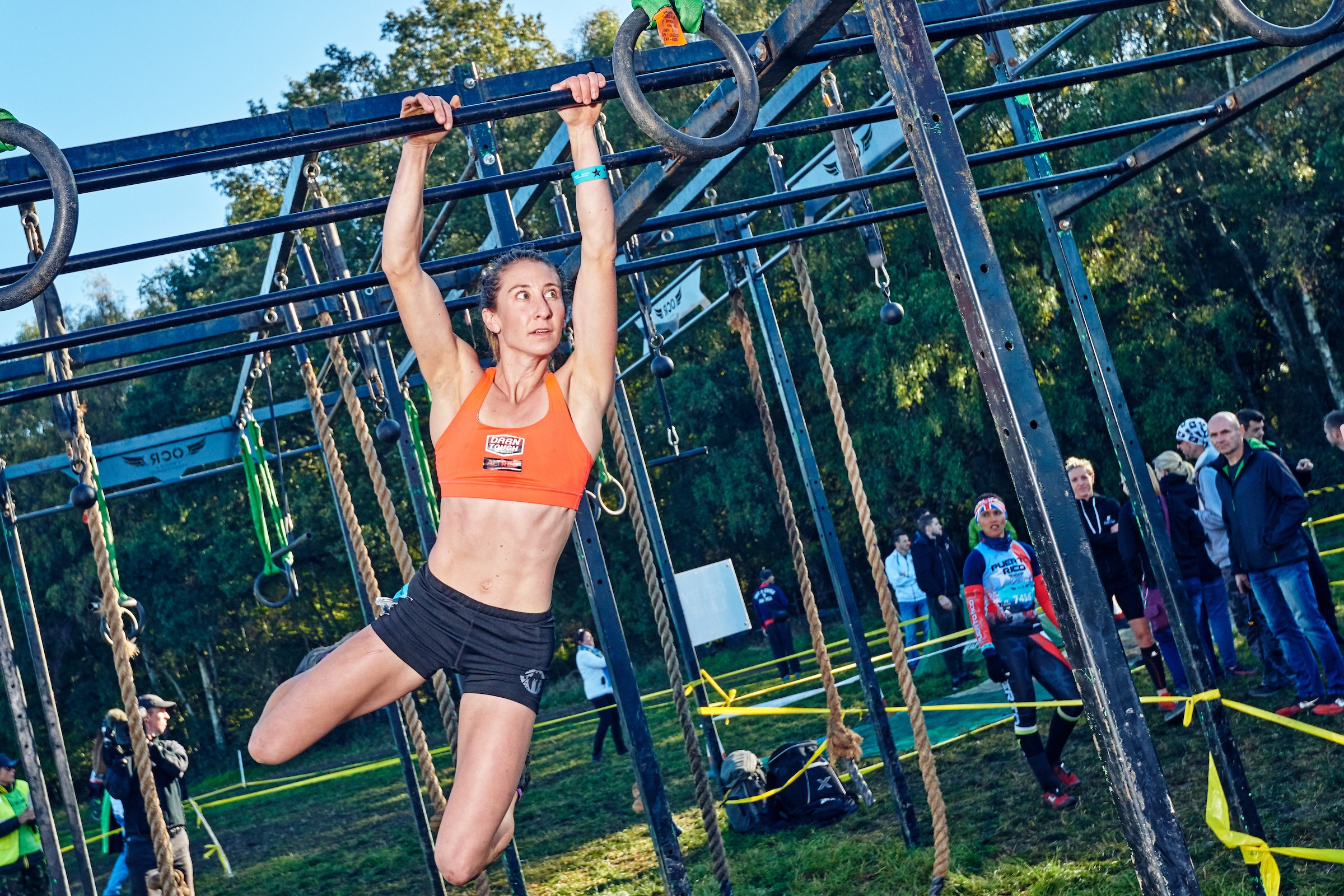
1. Practice Makes Perfect
While not everyone has an Urban Sky available, you can probably find a set of monkey bars someplace either at a ninja gym or a local playground. Moving across monkey bars is different than just static holds and hanging. When possible, be specific and move across the bars. Even if it is just a pull-up bar a lot of times it may be possible to practice traversing onto adjacent pull up bars or support structures. When all else fails you can practice doing things like hip touches (one hand releases and touches the hip) or changing grips (palms away vs. palms towards you), although I would use that only if movement is impossible.
2. Have More Than One Technique
You should have a couple different methods in your bar crossing arsenal. Depending on lots of factors like fatigue, thickness of bar, if the bars are wet and how fast you are trying to move will dictate which technique you use. Furthermore, you are probably going to want to use multiple techniques on a single obstacle as the types of holds change.
- Two Hand Techniques: The two hands per bar method is great as the grip fatigues and provides a secure hold on the bar. If the bar is wet, very fat or rotates, you probably want to use the opposing hands method (one hand facing in each direction and you move sideways across the bar). Personally, I find the two hands per bar and opposing grip to be the most secure, have the most control and, obstacle dependent, it may even be the fastest.
- One Hand Techniques: The first one is what I like to call a monkey swing, in which you let the natural sway of your body control your speed. While this is good, if you are trying to go fast, I recommend keeping your core tight and pulling your body across the bars, which will be faster rather than letting your body swing naturally. Especially with the monkey swing, you’ll find that this technique maximizes how much you are hanging from one hand, something you don’t want in a grip intensive race like OCRWC.

3. Understand Momentum
If you are going to have to make a big reach for the next hand hold, you are going to want to pull back on your previous one, so you have more momentum going forward. This will be especially useful for obstacles like the Force 5 rig and Urban Sky. If you stop moving and start dead hanging with no momentum, the obstacle gets harder. Use the momentum to your advantage, which improves when you practice crossing obstacles with your hands. Variety is key here, so you want to try things like skipping bars and changing directions while practicing. If you are always practicing on the same setup, bars or obstacles, the transfer to OCRWC specific obstacles will be harder.
4. Make it Progressive
Your training should get harder as you get better so that may mean adding a set to your workout, reducing your rest period, adding length (i.e. down and back) or adding a weight vest (which should be done in small increments). This continued additional stress will cause the need for you body to continually adapt.
5. Rest
You can’t work on grip and back strength every day and expect to improve. Instead use days of high stress followed by days of recovery. These recovery periods will allow your body to adapt from the previous training and get better.
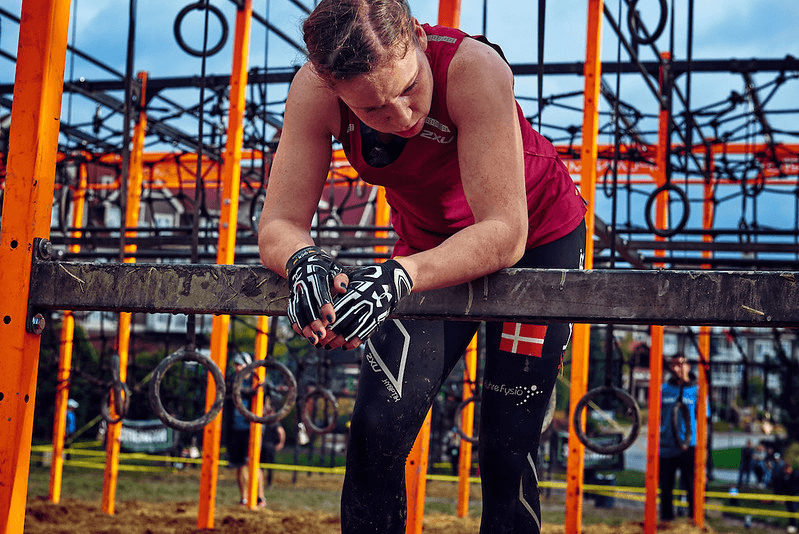
6. Obstacles Specific Tips
Trapeze & Force 5 Rig: Momentum will play a big role in both obstacles. You may want to pull back on the last hold to ensure you can reach the next one with ease.
Urban Sky: Urban sky is broken into sections, which means that you can complete a section, rest and then continue forward. If you are worried about losing your band, take a rest between each section, let your grip recover and attack the next part. You will be surprised what 30 seconds of rest can do for recovery.
7. An Example Workout
Here is an easy workout that can be adapted to any obstacle, which builds the physical strength, neurological pathways (via lots of repetitions) and most importantly confidence. The workout is called Endless Monkey Bars and is simple to remember:
- 10 min warm up
- (Run ¼ mile (400m), do a set of monkey bars or other grip obstacle)
- Repeat until a designated mileage goal
- 10 min cool down
It’s not very exciting but it builds confidence and obstacle specific strength. If you run five miles, that’s 20x monkey bar crossings. If you are still crossing the monkey bars at the end of six miles, you can enter a race with assured that you’ll be able to do 20 grip obstacles in a row no problem.
Enjoy the grip training and don’t get discouraged. Sometimes progress takes a while and you won’t necessarily see improvement every single week. The good news is we still have a couple of months until OCRWC. Stay consistent and stay motivated and don’t forget to sign up for the race.
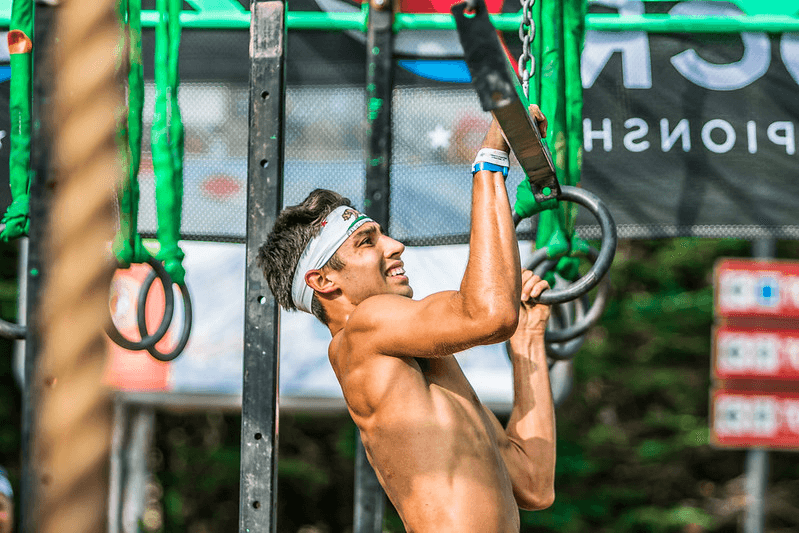
Evan “Ultra-OCR Man” Perperis, NSCA-CPT, is an athlete on the Conquer The Gauntlet Pro Team, the author of six books on Obstacle Course Racing and known for his record setting multi-day OCR events for charity. Included in his 58 podium finishes is a 2nd place Pro Coed Team at the 2018 North American OCR Championships and 1st Place Team at 2018 World’s Toughest Mudder. Find more of his content at www.teamstrengthspeed.com.
Want more great training tips? Look throughout the OCRWC Blog page for more articles in the “How to Train for the OCRWC” series and pick up a copy of Evan’s newest training book “The New Strength & Speed’s Guide to Elite Obstacle Course Racing” or if you are more ultra-focused like Evan is “Mud Run Guide’s Ultra-OCR Bible”.
